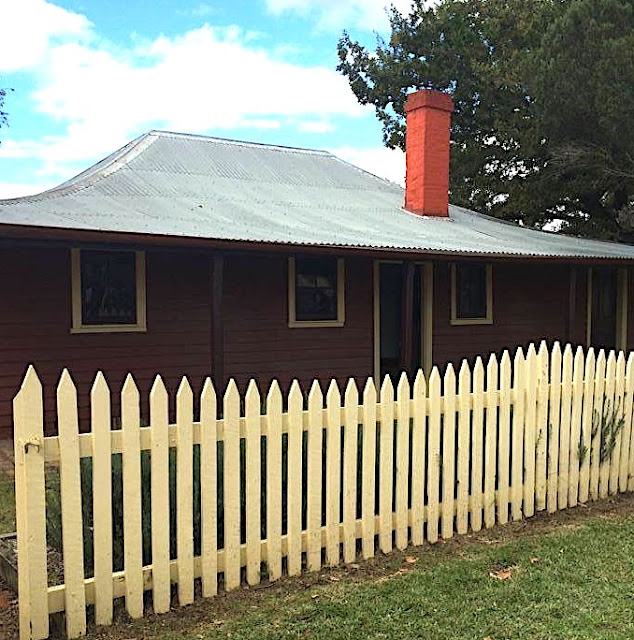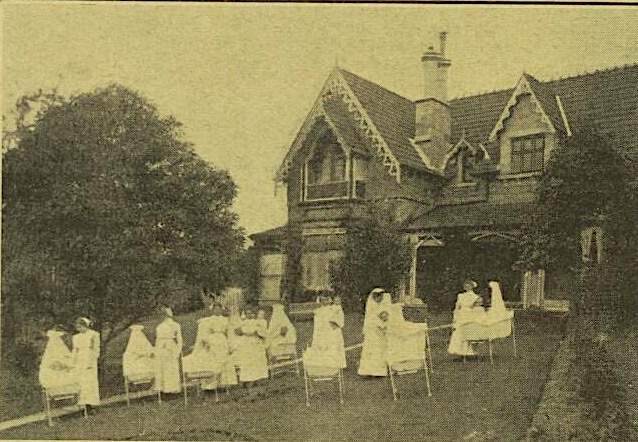 |
| Elizabeth Farm was built in 1793 for John and Elizabeth Macarthur and their family |
Elizabeth Farm, home of wool pioneers John and Elizabeth Macarthur, Australia's oldest homestead, is located at 70 Alice Street, Rosehill, Sydney, NSW.
 |
| The Governor' s House at Rose Hill, NSW — From an Early Sketch |
The Macarthur's arrived at Port Jackson in June 1790, with the
Second Fleet.
On arrival, John MacArthur was appointed commandant to Parramatta, and in 1793, he was granted 100 acres at Rose Hill.
The construction of Elizabeth Farm began in 1793. By 1794, the Macarthur's had 20 acres of wheat, 80 acres of corn and potatoes and livestock including horses, cows, goats, and pigs.  In 1797, John Macarthur imported merino sheep (3 rams and 5 ewes) for Elizabeth Farm.
In 1797, John Macarthur imported merino sheep (3 rams and 5 ewes) for Elizabeth Farm.
 |
| Elizabeth Farm was built in 1793 for John and Elizabeth Macarthur and their family, Land (Sydney, NSW : 1911 - 1954), Wednesday 20 October 1948, |
Elizabeth Macarthur was integral to the establishment of the local wool industry, which lay the foundations of Australian prosperity.
She managed the farm and the family during her husbands long absences oversea, from 1801 to 1805 and from 1809 to 1817 (John Macarthur was in England for his part in the Rum Rebellion)
In 1800, a sample of John Macarthur's wool was sent to England by Governor King.
John Macather wrote In 1810:
I am perfectly aware, my beloved wife, of the difficulties you have to contend with, and fully convinced that not one woman in a thousand, would have resolution and perseverance to contend with them all, much more to surmount them in the manner that you have so happily done. . . . I am grateful and delighted with your conduct.Elizabeth was concerned with the
welfare of women convicts and Aboriginal people but lost some of her sympathy with the growing toll of friends killed by the natives.
 |
| John Macarthur (1767?-1834) |
 |
| Elizabeth Macarthur (1766-1850) |
John Macarthur later lived between Elizabeth Farm and at Camden, where he had a residence.
John Macarther who had engaged in many feuds and vendettas, became mentally unwell. Elizabeth wrote that he “labours under a partial derangement of mind” (likely bipolar affective disorder). He died 11 April 1834.
Elizabeth continued to successfully run the enterprises until her death in 1850.
The Elizabeth Farm estate is
managed by Sydney Living Museums and is open to the
public.
Rose Hill is part of the traditional land of the Darug people.
Around Elizabeth Farm
 |
| Elizabeth Farm was built in 1793 for John and Elizabeth Macarthur and their family |
 |
| Elizabeth Farm was built in 1793 for John and Elizabeth Macarthur and their family |
 |
| Elizabeth Farm was uilt in 1793 for John and Elizabeth Macarthur and their family |
 |
This early Victorian sun bonnet is a replica of a bonnet believed to
have belonged to Elizabeth Macarthur. The original was made from
unbleached linen, drawn over a series of 25 whalebone hoops
|
Things to Do
Elizabeth Farm (70 Alice Street, Rosehill, NSW)
Elizabeth Macarthur journal and correspondence, 1789-1840
Read: Elizabeth Macarthur: A Life at the Edge of the World, by Michelle Scott Tucker
Elizabeth and John: The Macarthurs of Elizabeth Farm. By Alan Atkinson


















































